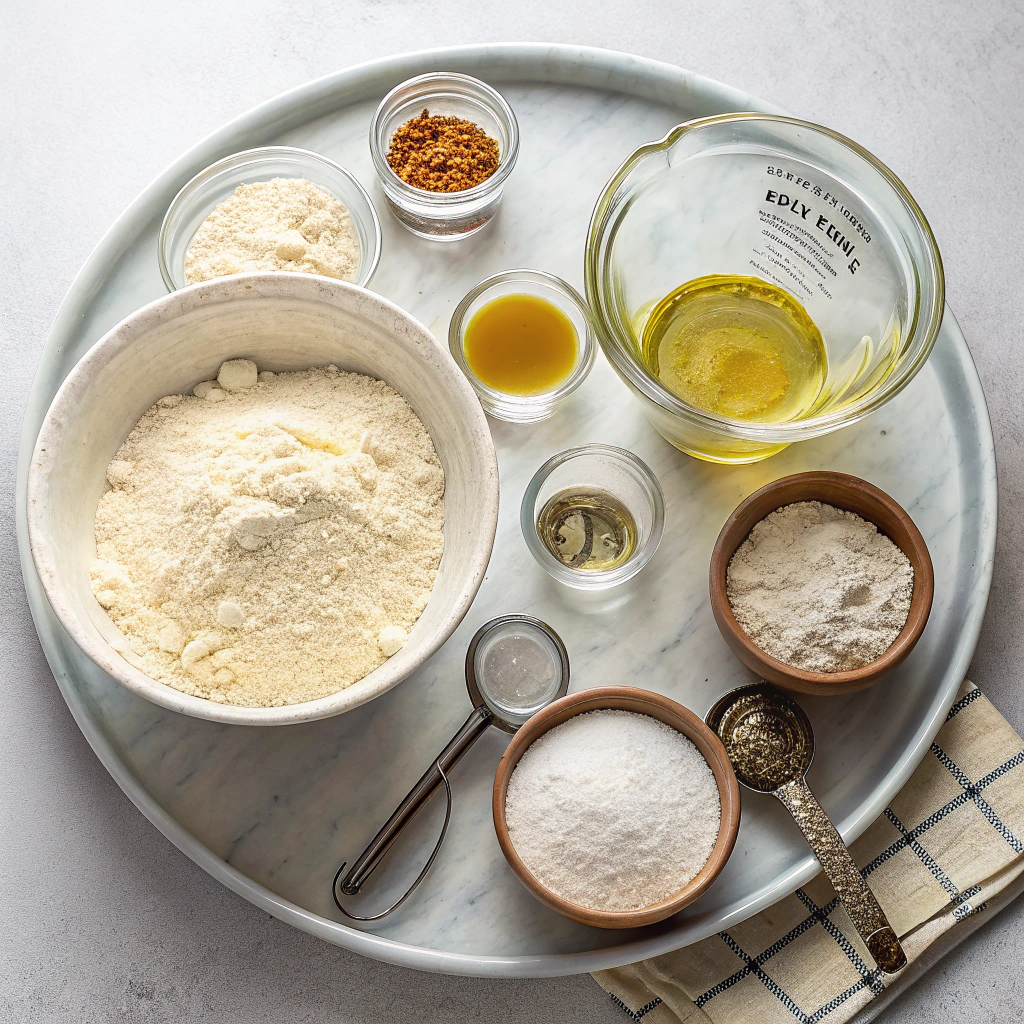This sourdough pizza crust is a game-changer, offering a perfectly chewy texture with minimal effort. Its tangy, complex flavor develops over a 12-hour rest, making every bite unforgettable. With just 20 minutes of prep and 8 minutes in the oven, it’s surprisingly simple yet delivers artisanal results.
The crust bakes up golden and crisp, with a soft, airy interior that’s ideal for your favorite toppings. Whether you’re a sourdough enthusiast or a pizza lover, this recipe will elevate your homemade pies to a whole new level.
What makes this crust stand out is its effortless elegance and versatility. The natural fermentation creates a depth of flavor that store-bought dough can’t match. Its chewy yet tender texture pairs beautifully with everything from classic marinara to creative gourmet combinations.
Plus, the hands-off resting time means you can plan ahead without stress. Once you taste the crispy edges and pillowy center, you’ll wonder why you ever settled for anything less. This is the pizza crust that will make you feel like a true kitchen pro.
Ingredients for The Simplest Sourdough Pizza Crust

- ½ cup (4oz/120g) sourdough starter (active and bubbly)
- 1 cup (8floz/240ml) warm water (around 90°F/32°C)
- 3 tablespoons olive oil (extra virgin preferred)
- 2⅓ cups (12oz/360g) bread flour* (all-purpose flour can be substituted, but bread flour yields a chewier crust)
- 2 teaspoons salt (fine sea salt or kosher salt works best)
Step-by-Step Instructions
- Mix the dough: In a medium bowl, whisk together the sourdough starter, warm water, and olive oil. Add the bread flour and salt, then stir until fully combined. The dough will be soft and sticky—this is normal. Cover the bowl with cling wrap or a shower cap and a kitchen towel. Let it rest for 30 minutes.
- Stretch and fold the dough: Wet your hand with water, scoop under the dough, and gently stretch one side away from the mass, then fold it over. Repeat this process 6-8 times around the dough. Flip the dough so the seams face down. The dough will become smoother. Repeat this stretch-and-fold process 3 more times, resting the dough for 30 minutes between each session. By the end, the dough will be pliable and elastic.
- Ferment the dough: Cover the dough and let it ferment at room temperature for 4 hours. It may not rise significantly, which is fine.
- Shape and refrigerate: Lightly flour a work surface and turn out the dough. Divide it into three equal rounds (about 8½ oz/240g each). Oil the inside of three pint-sized containers and place each dough ball seam-side down into them. Cover with lids and refrigerate for at least 24 hours (up to 5 days). For longer storage, freeze for up to 4 weeks.
- Prepare to bake: Remove the dough from the refrigerator and place it on a well-floured piece of parchment paper. Lightly coat the dough with flour. Gently flatten and stretch it into a 10-inch (25cm) circle, leaving a thicker border for the crust.
- Bake the pizza: Add your desired sauce, cheese, and toppings. Bake in a preheated oven at 550°F (288°C) for 8-10 minutes, or until the crust is golden and bubbly. Serve immediately and enjoy!
Perfect Pairings: Sauce and Topping Ideas
For a classic Margherita, spread a thin layer of tomato sauce, add fresh mozzarella, and top with basil leaves after baking. Feeling adventurous? Try a white pizza with ricotta, garlic, and spinach, or go bold with spicy pepperoni and jalapeños. Don’t forget to drizzle olive oil over the crust for extra flavor!
Storage and Reheating Tips
After refrigerating, the dough can last up to 5 days or be frozen for 4 weeks. To reheat leftover pizza, place it in a preheated oven at 375°F (190°C) for 5-7 minutes or use a skillet on medium heat for a crispy crust. Avoid the microwave to keep the texture perfect!
Time-Saving Hacks for Busy Bakers
Prepare the dough ahead of time and refrigerate or freeze it for later use. If you’re short on time, skip the 24-hour refrigeration—though the flavor won’t be as developed, the dough will still work. Use a stand mixer with a dough hook to speed up the mixing and folding process.
Essential Equipment for Pizza Perfection
A pizza stone or steel is ideal for achieving a crispy crust. If you don’t have one, a baking sheet works too. Use parchment paper to easily transfer the pizza to the oven, and keep a bench scraper handy for dividing and shaping the dough.
Common Questions Answered
Wondering why your dough isn’t rising much? Sourdough pizza dough often stays dense but becomes chewy and flavorful after baking. If your dough feels too sticky, lightly flour your hands and work surface. And yes, you can use all-purpose flour if bread flour isn’t available—just expect a slightly softer crust.
The Simplest Sourdough Pizza Crust (That’s Perfectly Chewy)
Ingredients
- ½ cup sourdough starter 4oz/120g
- 1 cup warm water 8floz/240ml
- 3 tablespoons olive oil
- 2⅓ cups bread flour 12oz/360g
- 2 teaspoons salt
Instructions
- Mixing The Sourdough Pizza Dough
- In a medium bowl, whisk together the starter, water, and olive oil.
- Add the flour and salt and stir to thoroughly combine. The dough will feel soft and sticky but that is exactly how it should be. Cover the bowl with a cling wrap (or a shower cap) and a kitchen towel and rest for 30 minutes.
- Stretching And Folding The Dough
- Wet your hand with a little water, scoop your hand underneath the dough, and gently grasp one side of the dough. Lightly stretch the dough in your hand away from the main mass, then fold it over. Repeat this motion on different sides of the dough 6 or so more times. (See video above for step by step.)
- Then, flip the whole mass of dough such that the seams of your folds face down against the bottom of the bowl. At this point, the dough will have become considerably more smooth, which is the goal. Repeat this process 3 more times: Rest the dough for another 30 minutes, then stretch and fold again exactly the same as before. All in all, you will have rest the dough for four 30 minutes increments and stretched and folded in between. In the end, the dough will be very pliable and elastic.
- Cover once more and ferment for 4 hours at room temperature. Your dough will probably not rise significantly but that is perfectly fine.
- Shaping Your Pizza
- Lightly flour a work surface and turn out the dough. Divide the dough evenly into three 8½ oz (240g) rounds. Tightly coat the inside of 3 one pint storage containers with oil and place a dough ball seam-side down into each one. Cover with lids.
- Important step: Refrigerate for at least 24 hours before using. The dough kept in the refrigerator longer will continue to develop flavor and has a shelf life of 5 days. It can also be frozen at this time for up to 4 weeks.
- To make pizza, remove the dough from the refrigerator and place it on a well-floured piece of parchment paper. Coat the dough lightly all over with flour as well. With your hands, gently flatten and stretch the dough into a thin circle about 10 inches (25cm). Form a thicker border around the edge for a lovely, bubbly pizza crust. Add pizza sauce, cheese, and desired toppings. Bake at 550°F (288°C) for only 8-10 minutes. Enjoy immediately.
